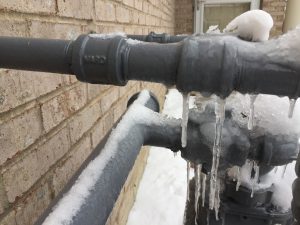The content listed below about How to Prevent Your Pipes From Freezing is relatively engaging. Don't bypass it.

Winter can damage your plumbing, specifically by freezing pipes. Right here's how to avoid it from taking place and what to do if it does.
Introduction
As temperature levels drop, the danger of frozen pipelines boosts, possibly resulting in expensive fixings and water damages. Comprehending just how to prevent frozen pipes is important for home owners in chilly environments.
Comprehending Icy Pipelines
What triggers pipelines to freeze?
Pipes freeze when exposed to temperatures listed below 32 ° F (0 ° C) for expanded durations. As water inside the pipes freezes, it expands, putting pressure on the pipe wall surfaces and possibly causing them to break.
Risks and damages
Icy pipelines can bring about water supply disruptions, residential property damages, and costly fixings. Ruptured pipelines can flooding homes and cause extensive architectural damages.
Indications of Frozen Piping
Determining icy pipes early can stop them from rupturing.
How to recognize frozen pipelines
Search for lowered water flow from taps, unusual smells or sounds from pipes, and noticeable frost on revealed pipelines.
Avoidance Tips
Protecting vulnerable pipes
Cover pipelines in insulation sleeves or use heat tape to secure them from freezing temperature levels. Focus on pipelines in unheated or exterior locations of the home.
Heating methods
Maintain interior spaces properly heated, especially areas with plumbing. Open closet doors to allow cozy air to flow around pipelines under sinks.
Securing Outside Plumbing
Garden hoses and outdoor taps
Detach and drain yard pipes before winter months. Set up frost-proof faucets or cover outdoor taps with insulated caps.
What to Do If Your Pipelines Freeze
Immediate actions to take
If you believe frozen pipelines, maintain faucets open up to eliminate stress as the ice melts. Utilize a hairdryer or towels taken in hot water to thaw pipes gradually.
Long-Term Solutions
Architectural changes
Consider rerouting pipelines far from outside wall surfaces or unheated areas. Add extra insulation to attic rooms, cellars, and crawl spaces.
Upgrading insulation
Purchase high-quality insulation for pipes, attics, and walls. Correct insulation aids maintain consistent temperatures and reduces the threat of icy pipelines.
Final thought
Stopping icy pipes requires proactive steps and fast responses. By understanding the reasons, indicators, and preventive measures, property owners can safeguard their plumbing during cold weather.
5 Ways to Prevent Frozen Pipes
Drain Outdoor Faucets and Disconnect Hoses
First, close the shut-off valve that controls the flow of water in the pipe to your outdoor faucet. Then, head outside to disconnect and drain your hose and open the outdoor faucet to allow the water to completely drain out of the line. Turn off the faucet when done. Finally, head back to the shut-off valve and drain the remaining water inside the pipe into a bucket or container. Additionally, if you have a home irrigation system, you should consider hiring an expert to clear the system of water each year.
Insulate Pipes
One of the best and most cost-effective methods for preventing frozen water pipes is to wrap your pipes with insulation. This is especially important for areas in your home that aren’t exposed to heat, such as an attic. We suggest using foam sleeves, which can typically be found at your local hardware store.
Keep Heat Running at 65
Your pipes are located inside your walls, and the temperature there is much colder than the rest of the house. To prevent your pipes from freezing, The Insurance Information Institute suggests that you keep your home heated to at least 65 degrees, even when traveling. You may want to invest in smart devices that can keep an eye on the temperature in your home while you’re away.
Leave Water Dripping
Moving water — even a small trickle — can prevent ice from forming inside your pipes. When freezing temps are imminent, start a drip of water from all faucets that serve exposed pipes. Leaving a few faucets running will also help relieve pressure inside the pipes and help prevent a rupture if the water inside freezes.
Open Cupboard Doors
Warm your kitchen and bathroom pipes by opening cupboards and vanities. You should also leave your interior doors ajar to help warm air circulate evenly throughout your home.

I discovered that piece of writing on Helpful Tips to Prevent Frozen Pipes this Winter while doing a lookup on the search engines. Be sure to take a moment to distribute this page if you enjoyed reading it. Thank you so much for going through it.
Additional Information
Comments on “Shielding Your Pipes from Freezing Damage: Key Strategies”